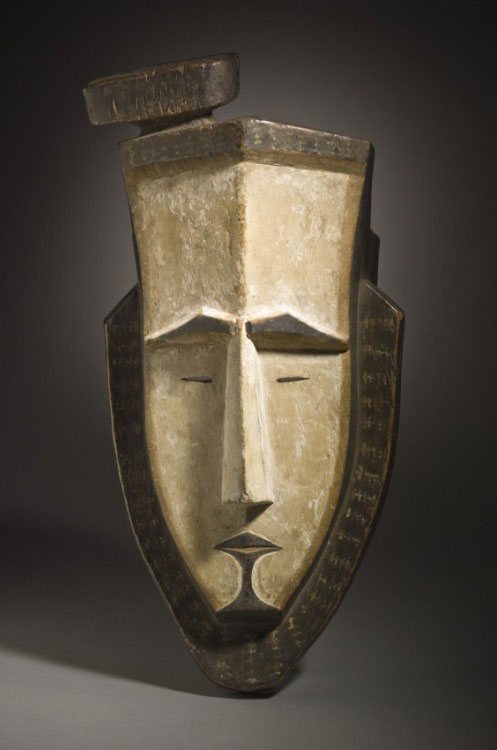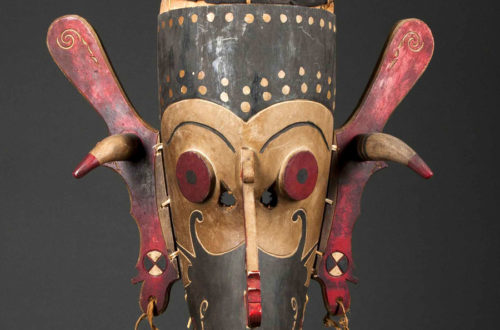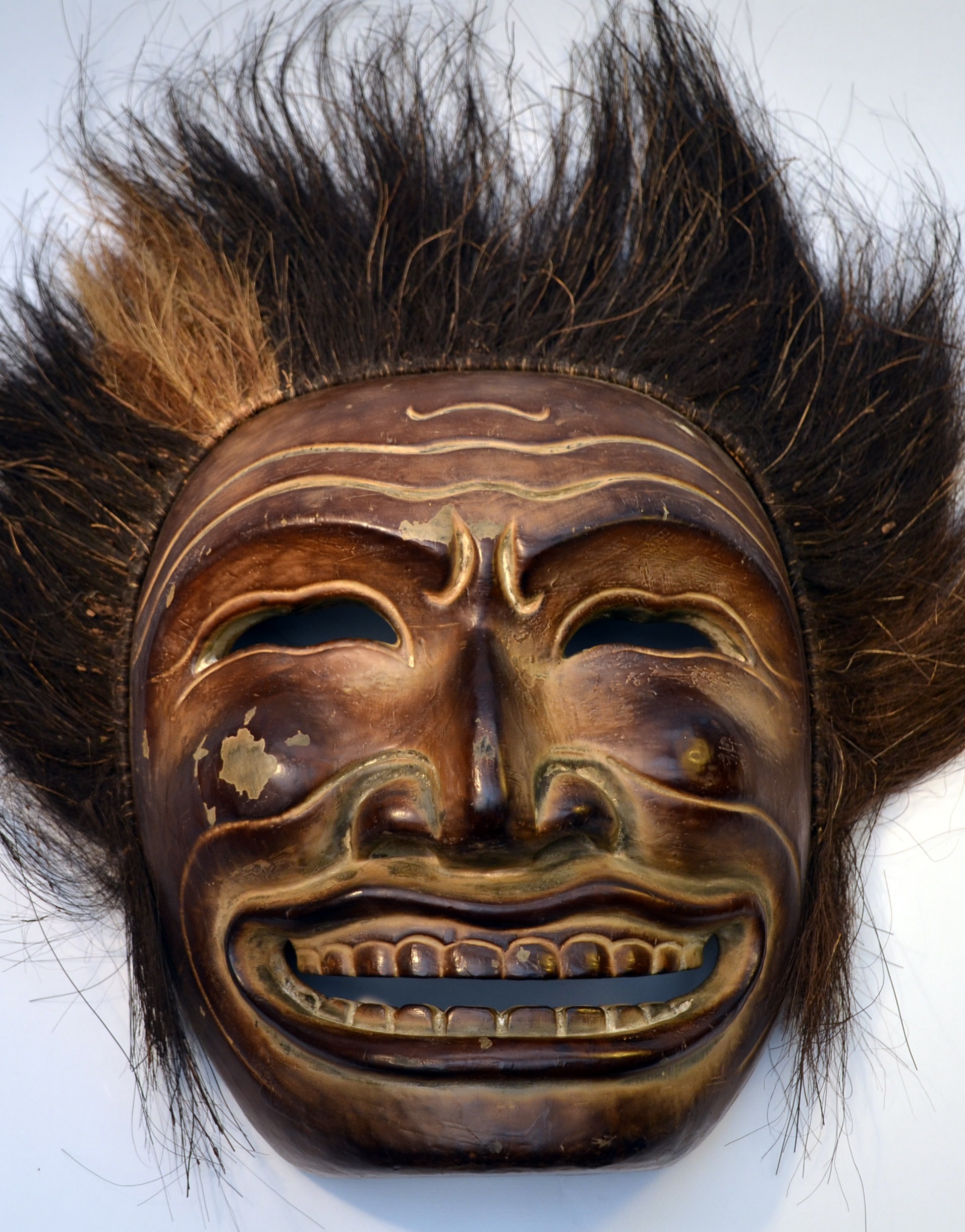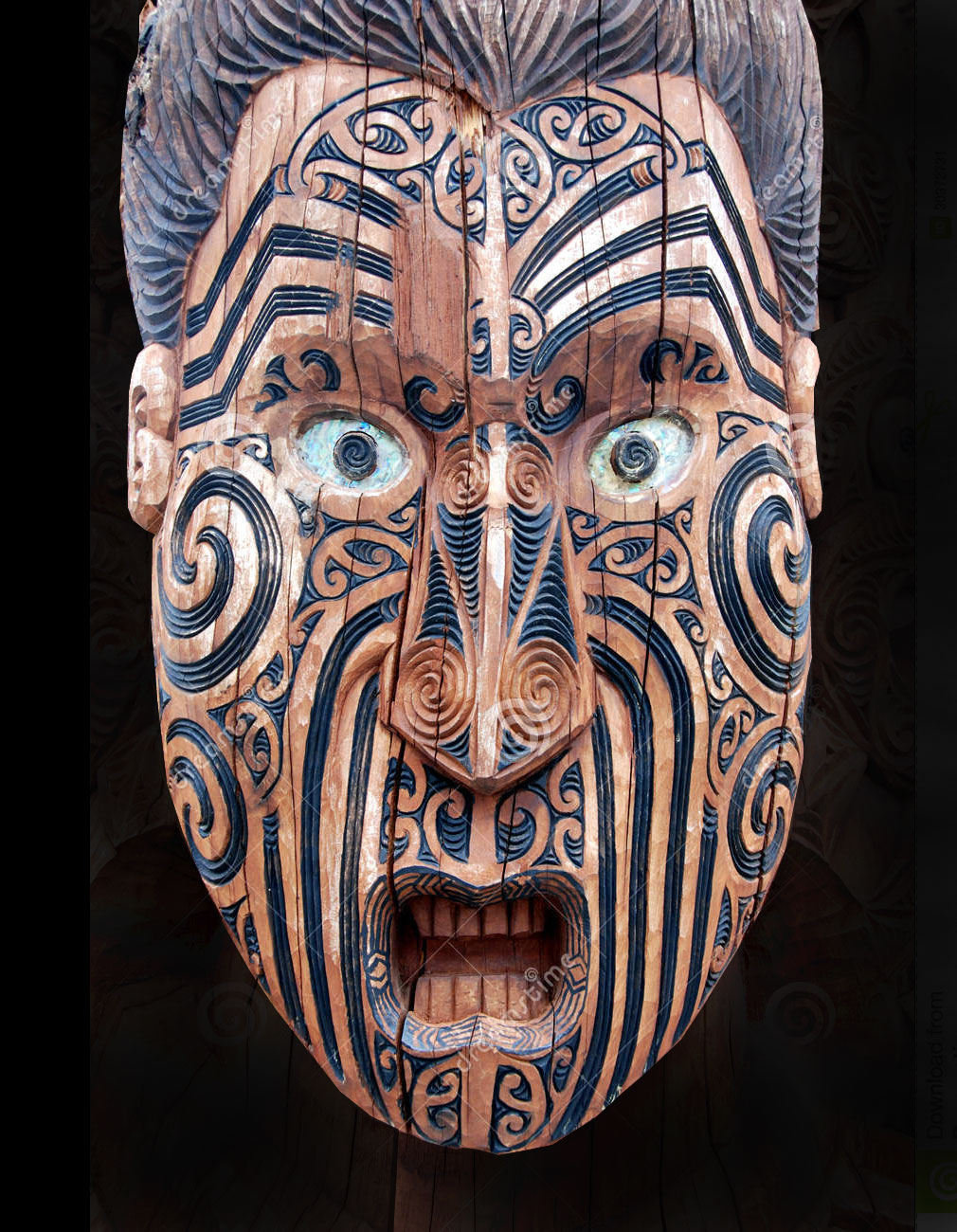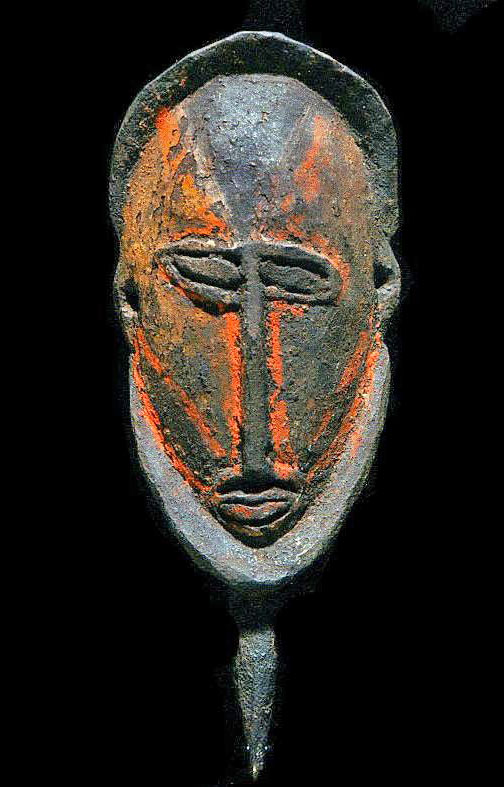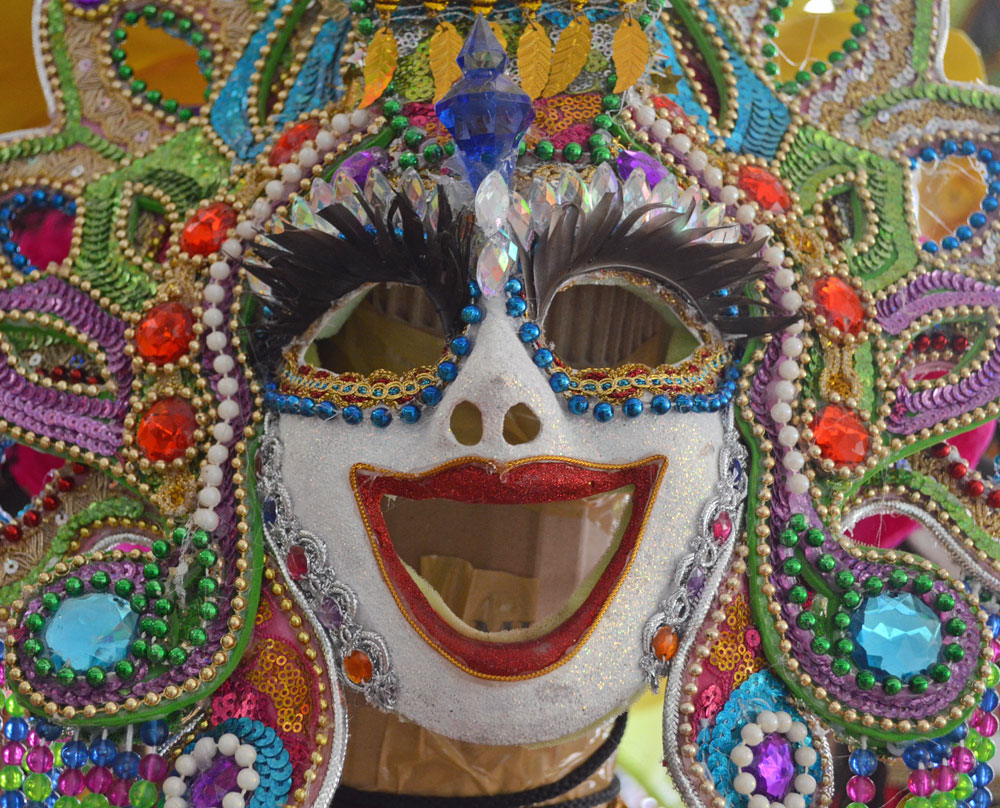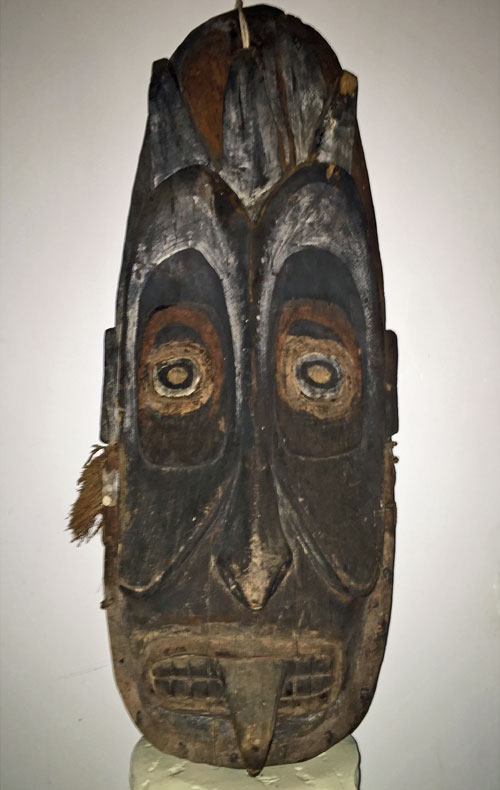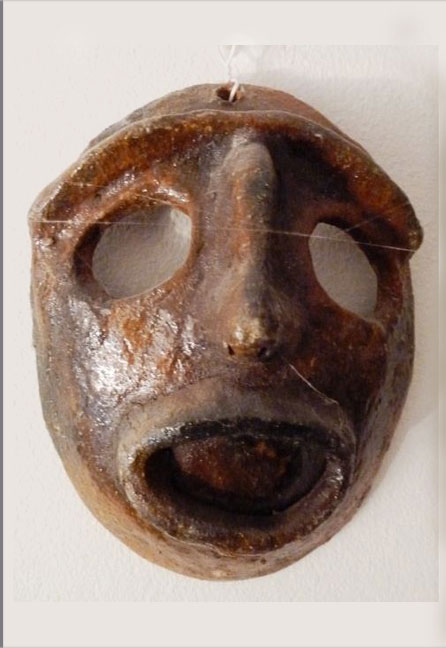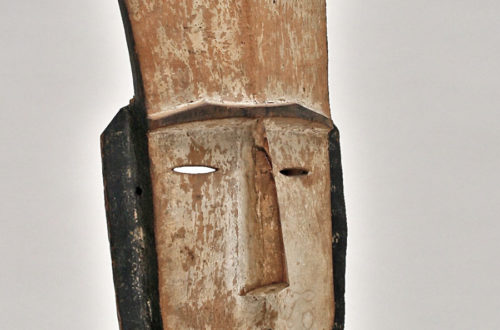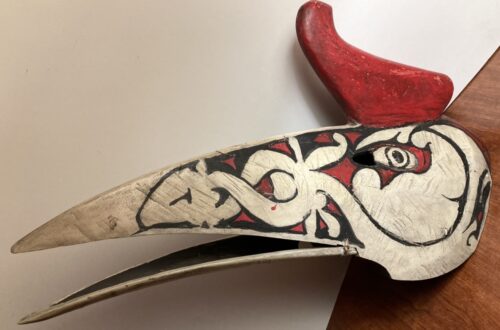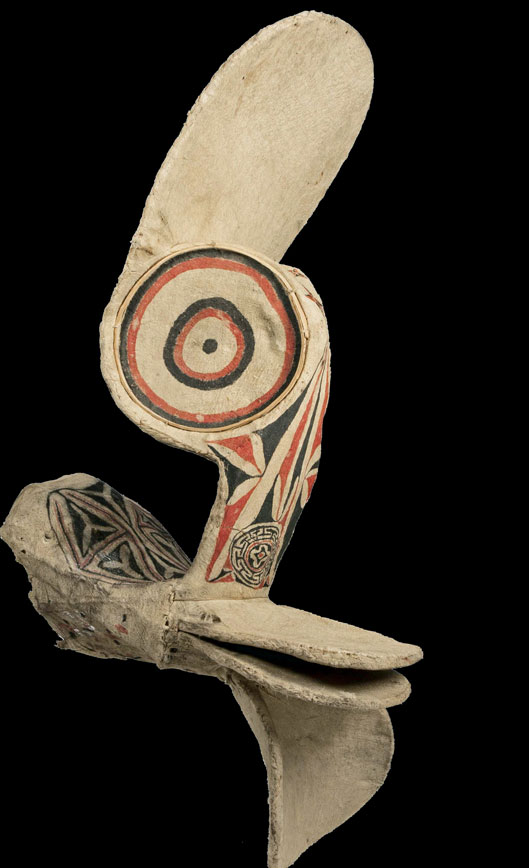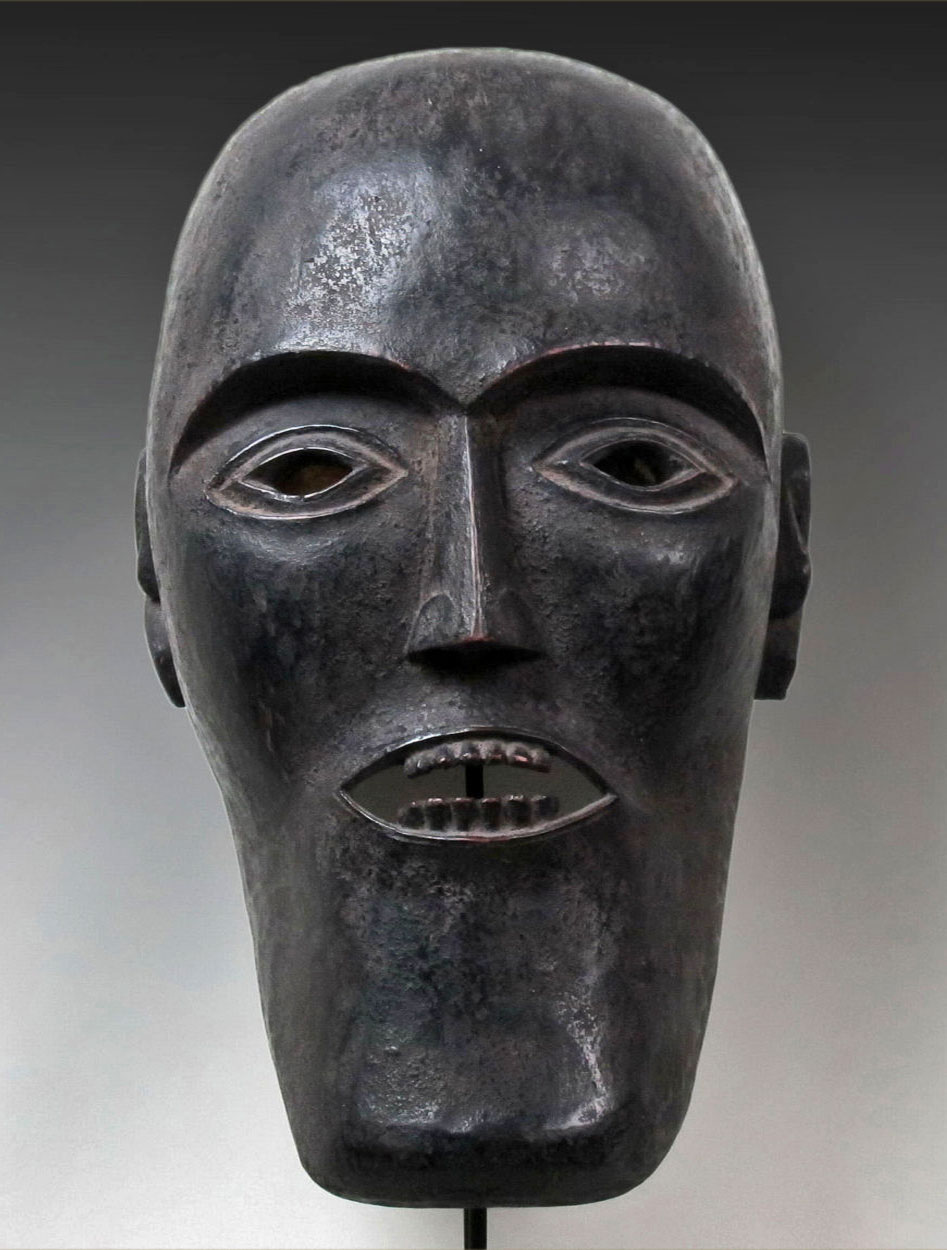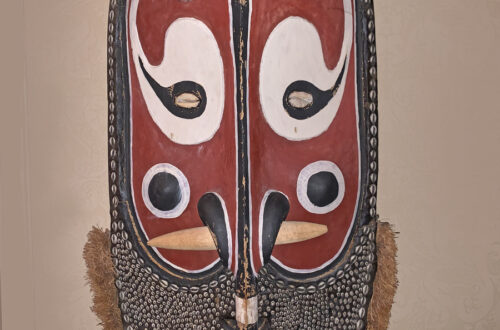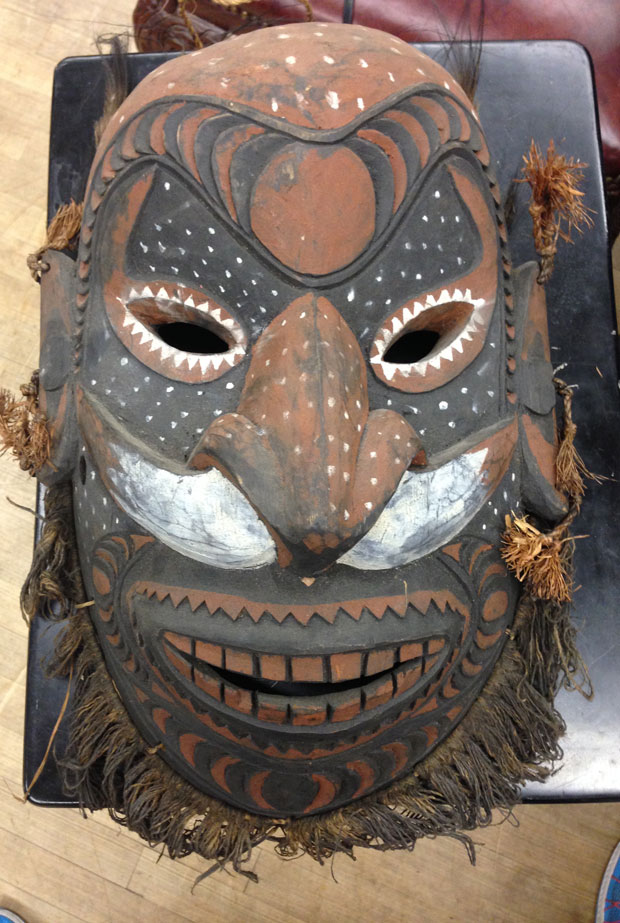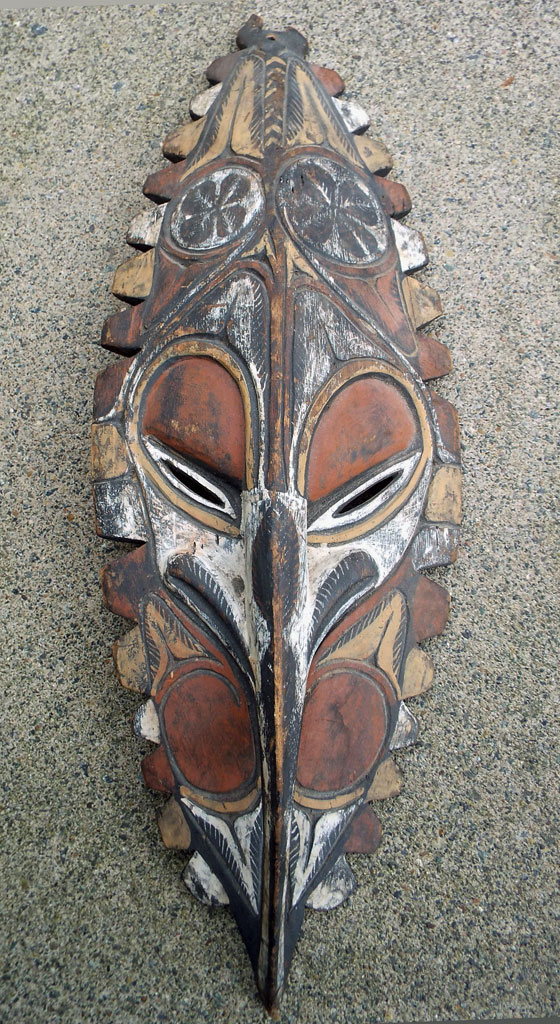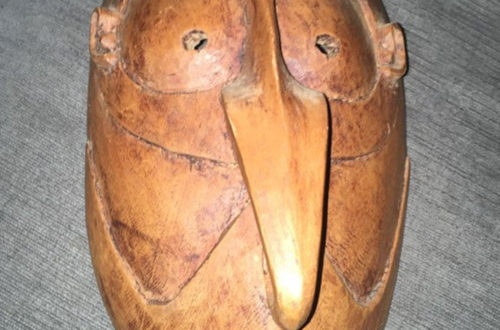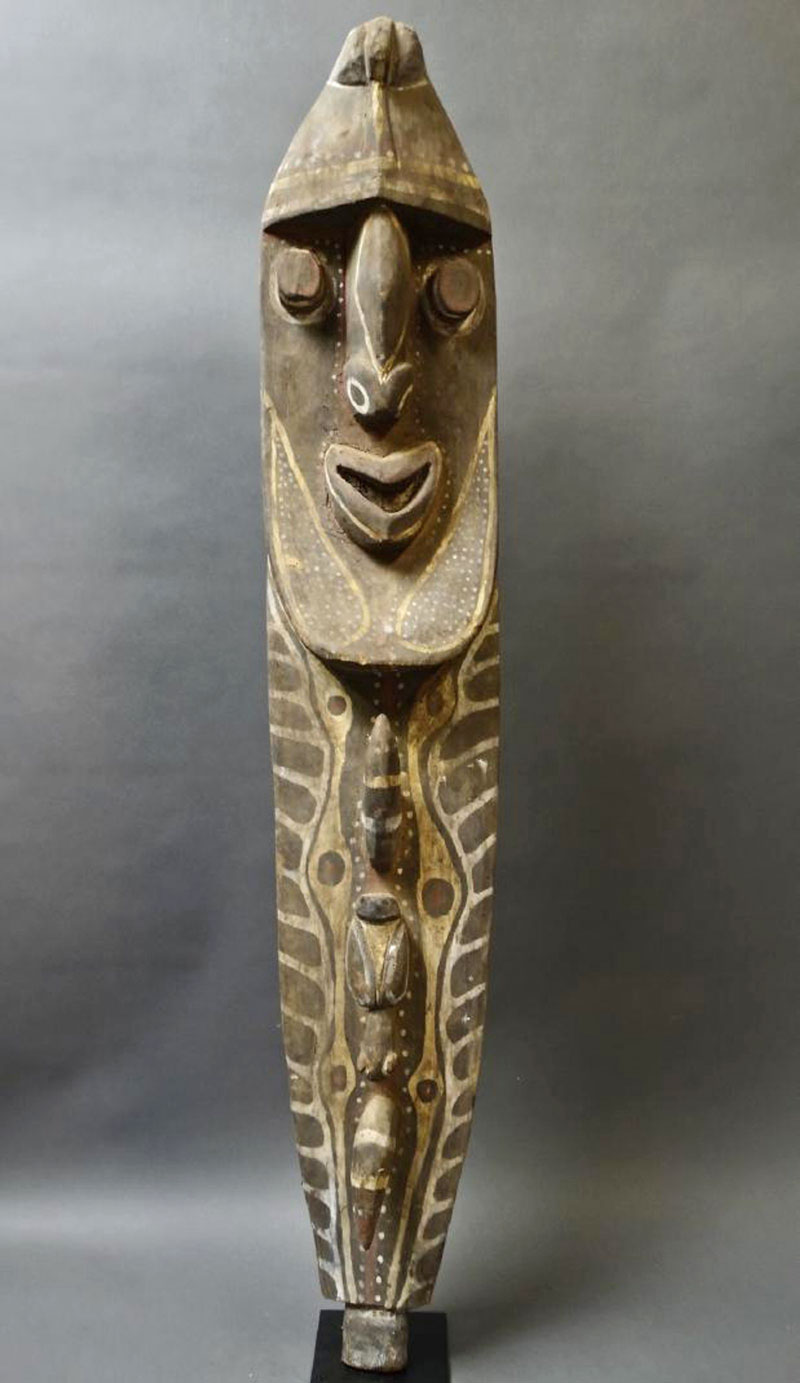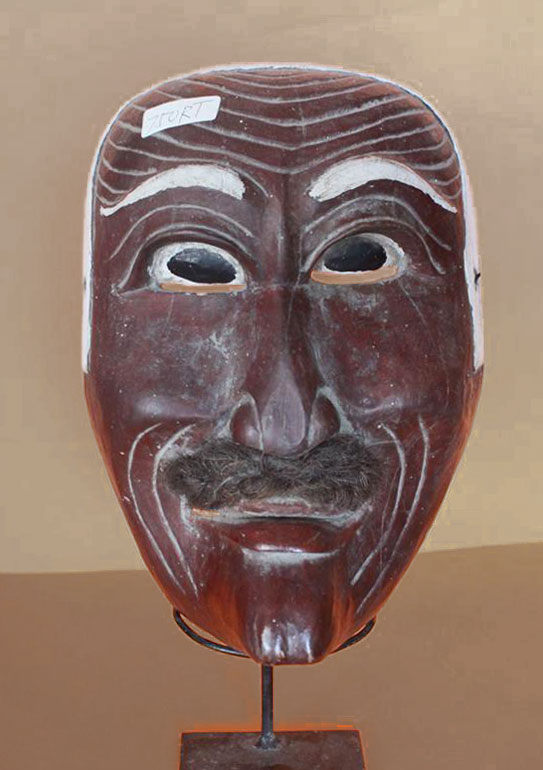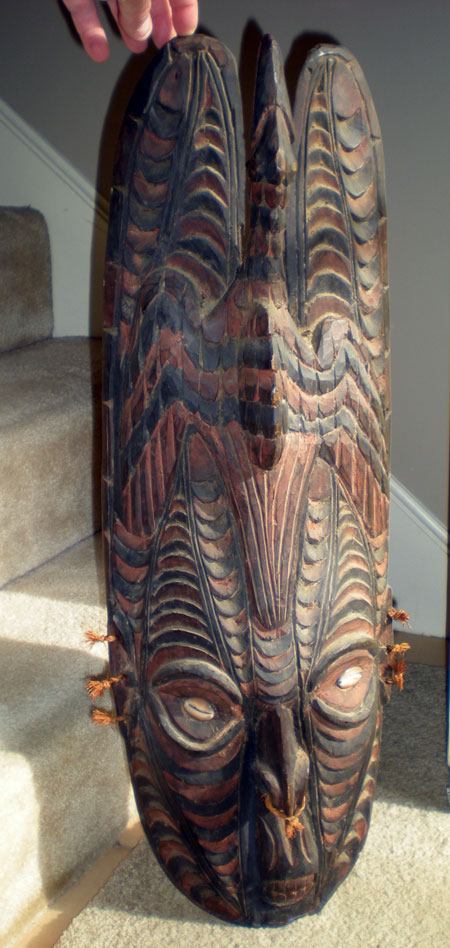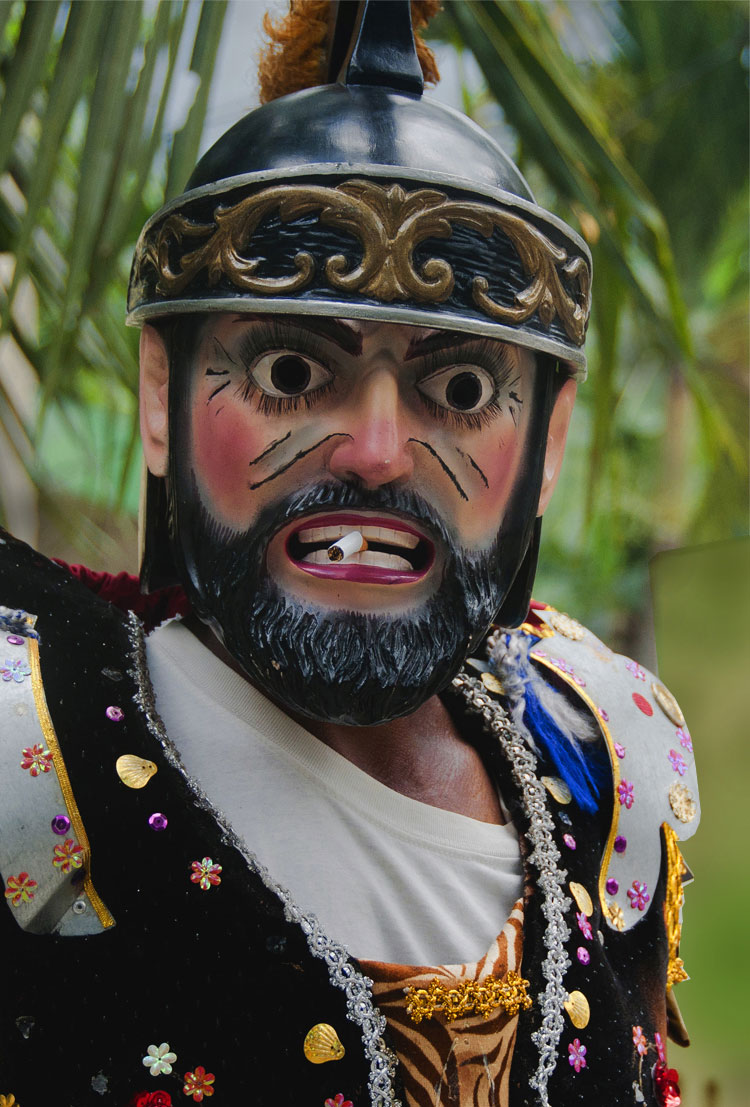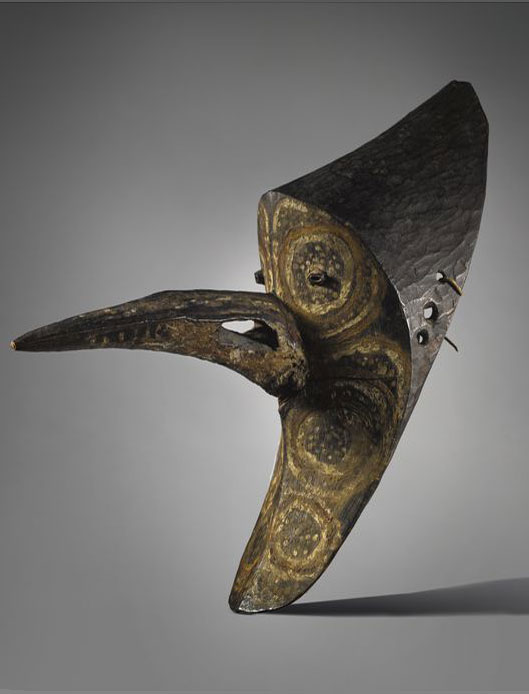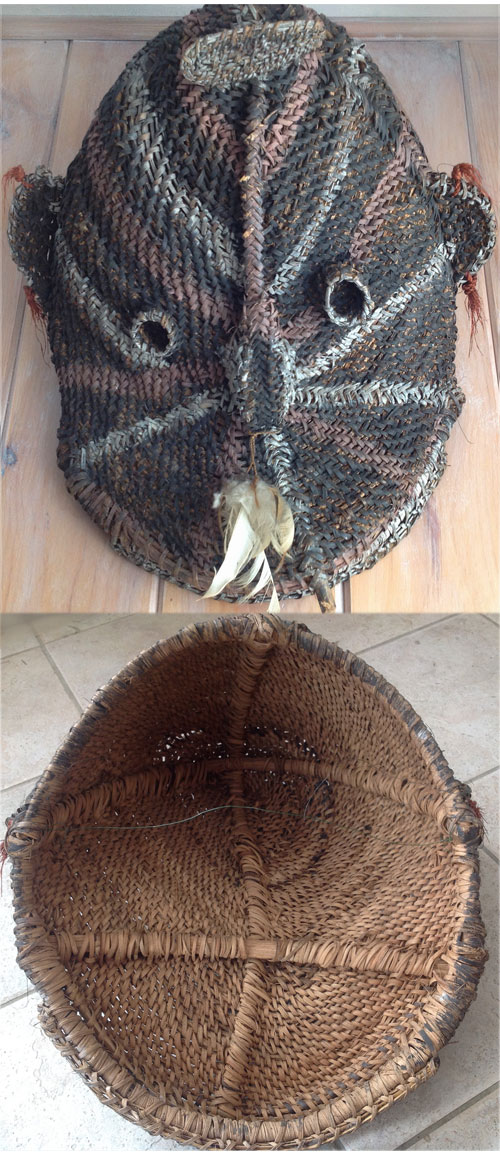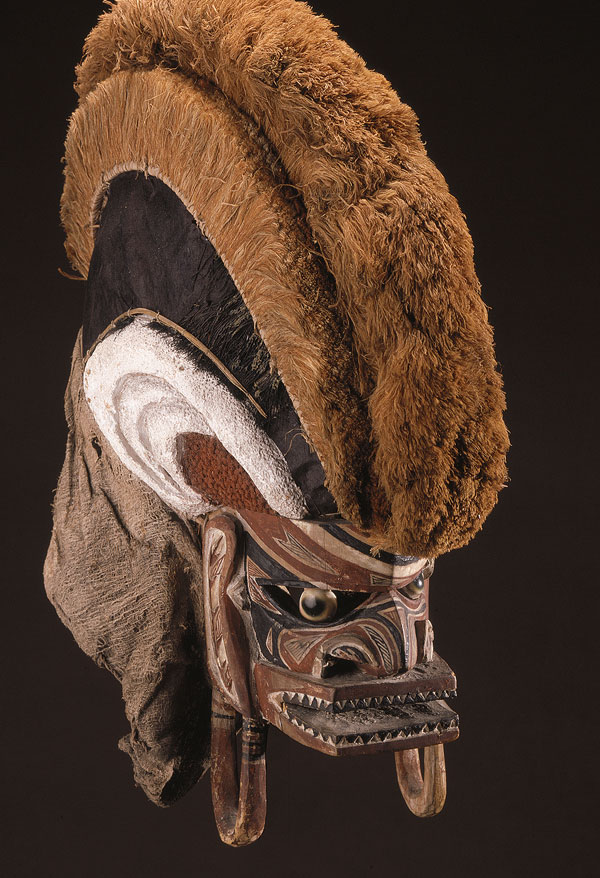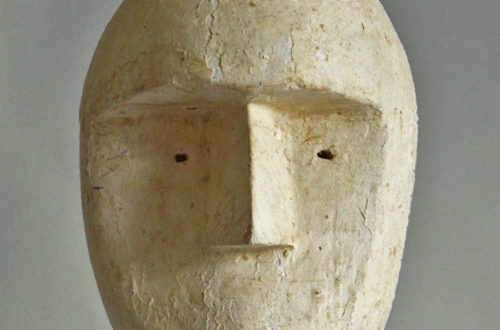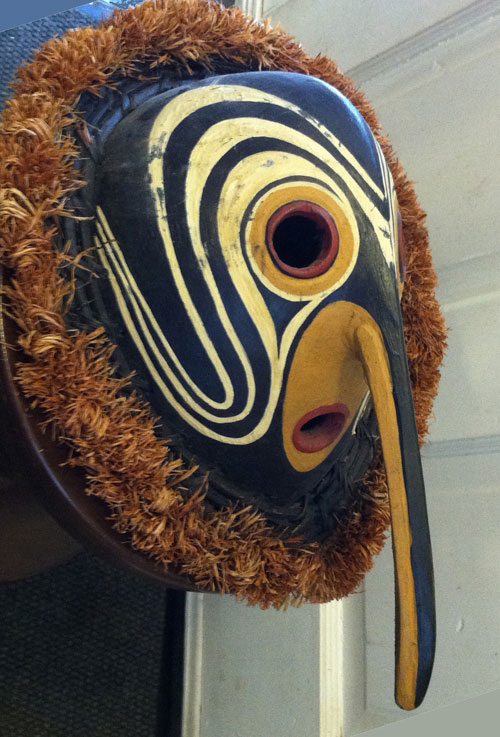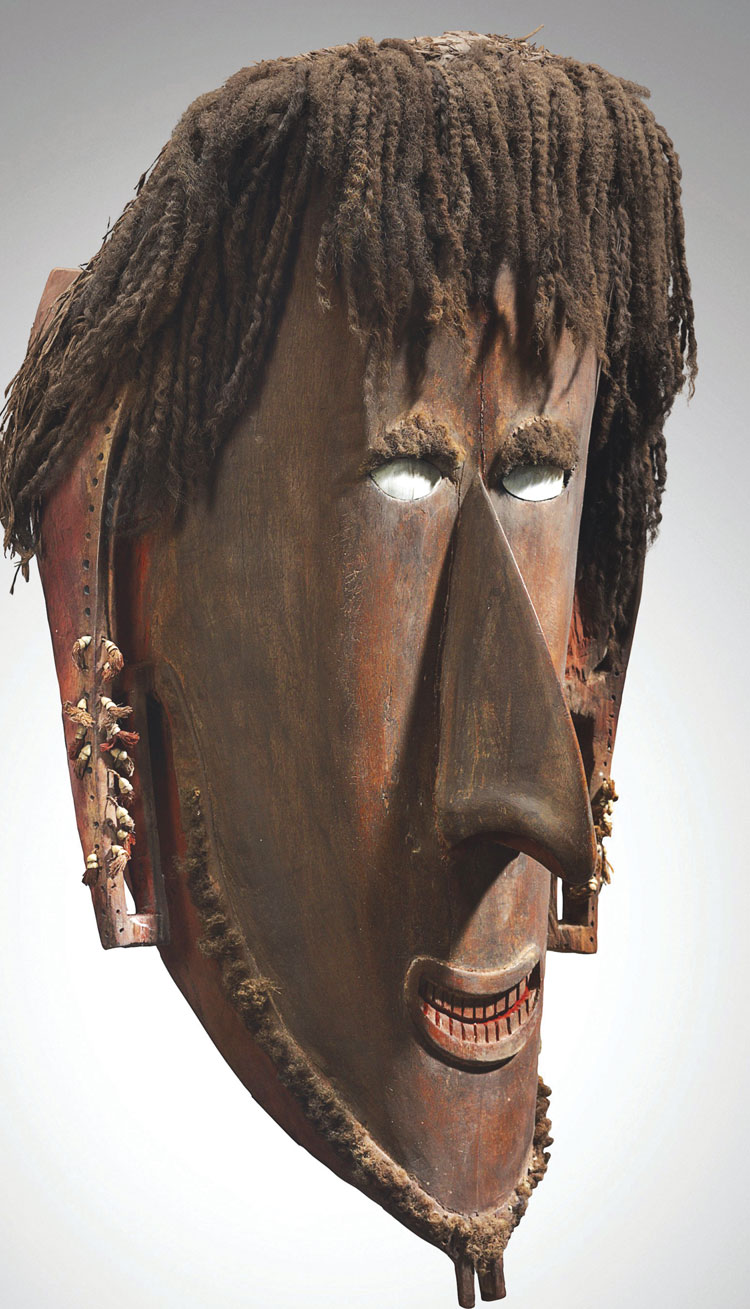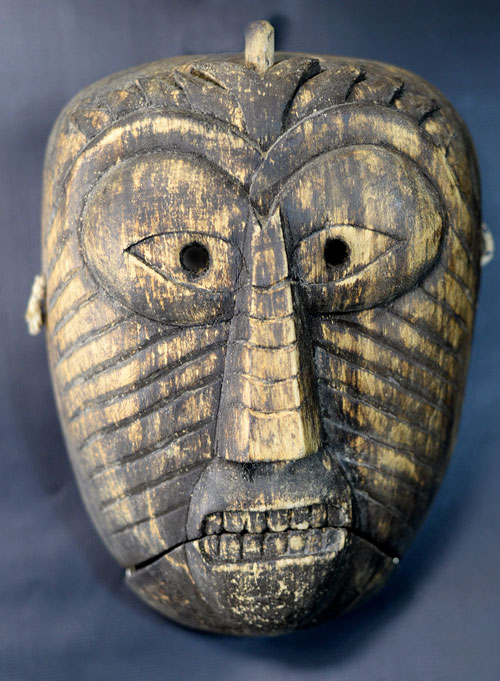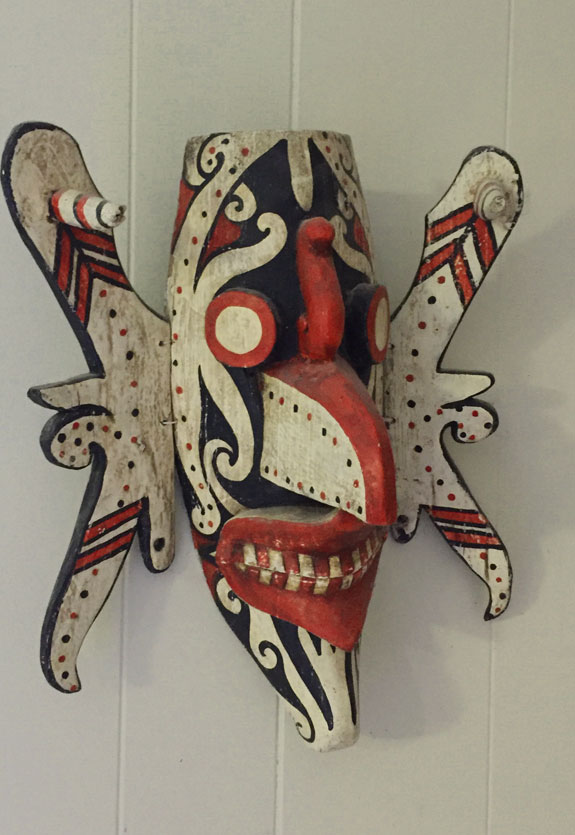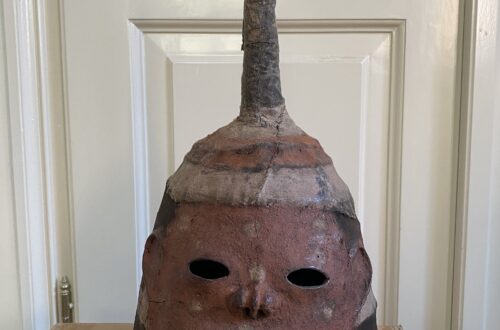This is an old mask called a tapuanu acquired circa 1885 in the Mortlock Islands (part of the Carolines). What makes it unusual is that the Micronesian people, who occupy a very large portion of the Pacific Ocean, are seldom interested in masks. Unlike those of the Indonesian and Melanesian cultures that are heavily into masquerade, you won’t see Micronesian masks very often. Our handsome tapuanu is carved wood 21 inches tall. It resides at the Los Angeles County Museum of Art (LACMA). A+ Save
-
-
Mudman mask from PNG
Q: Can you tell me where this pottery mask comes from and how old it is? Robert, 998 A: This is a mudman mask from the Asaro people of the Eastern highlands of Papua New Guinea. Made of clay, they were originally used to scare opposing warriors during an attack. Small ones like this are meant to be monkeys and today they are sold for profit to tourists. According to legend, an Asaro group were once driven into a swamp by an invading tribe. After plastering their heads with mud they launched a counterattack and frightened the enemy away. On pages 71 and 76 of Masks of the World by…
-
Sepic River area mask
Q: (I can only find the photos of this mask from Martha, not her message. Hopefully, she can add something of interest.) 983 A: This is a example of an ancestor mask from the Lower Sepic River area of Papua New Guinea. It is a little rough and probably artificially aged for the tourist trade, but it is a classic design that would look good on the wall. B Save Save
-
PNG Yam Mask
This old mask is from the Abelam people who live in the East Sepik province of Papua New Guinea. They are a farming society in which giant yams are an especially important food source. The masks are used to decorate harvested yams. Carvings like this (collected more than 40 years ago) were not made with steel tools and are often more beautiful than the more modern versions. You can see this and many other authentic Abelam and Wosera yam masks from the Dick Jemison Collection at Galerie Mourlot in New York City during Tribal Art Week, May 4-8. Thank you, David Cassera, for reminding us of this important show.
-
The fabulous Baining mask
This is a famous mask that comes from one of the islands in the New Britain chain of the Pacific Ocean. It is quite large (almost as big at the tribesman who’s wearing it) and is made of tapa cloth stretched over a light wood frame. The large masks are spectacular folk art worn at night around a bonfire built by the Uramot Baining people who live in the mountainous interior of the Gazelle Peninsula, and used during performances of the snake dance. Very dramatic, and different from anything else you can see in the world of masquerade. I hope you enjoy it.
-
Classic Sepic River mask
Q: I have recently inherited 2 south pacific masks from my parents which they collected when on a trip during the 1980’s. I was wondering if you can tell me more about them. I have photos but can’t attach to this email. Hope you can reply and I can send you this pictures. Think 1 is from Papua New Guinea / Vanuatu. Gerry, 945 A: Thanks for sending the pics. I will comment on the mask with more detail and precision. It is a beautiful example of PNG work. Please go to “Oceania” and scroll down to post #899. What I say there applies to this one as well. Also,…
-
Lovely piece of PNG art
Q: Purchased in antique store for $35.00. All wood. Measures 30″H x 10″W. Has shells for eyes and a carved bird on the top. It has a string for hanging on the back. I have looked at a lot of masks and can’t quite identify this or put a value on it. Can you help? Charlene, 938 A: Thanks for the sharp photos of the front, side and rear. Good photos are always a big help to me. Papua New Guinea represents the last indigenous culture to be discovered by collectors. Now a few talented carvers are making especially nice pieces for the market. This particular mask is traditional in…
-
Spectacular mask from the South Pacific
Part of the Oceanic area is the South Pacific, which includes the small islands east of Papua New Guinea. Many of the islands were first visited by Americans and Europeans about 200 years ago at the time Africa was being colonized as well. Both areas had masks and other traditional art that fascinated the explorers. This Malagan mask from the island of New Ireland, used for ceremonies honoring the dead, is indeed spectacular. Rarely do we see Oceanic masks of this quality outside museums or books. From a museum collection, this mask is shown on page 70 of our new book, Masks of the World.
-
Modern Mosquito Mask
Q: I was wandering around a Goodwill “end of the rode” store, where items are priced by weight! They were pushing large carts filled with ephemera towards the center of the store. People always make a wild dash to be the first one at the bins!! I waited until everyone had gone to another bin….and I found this mask. It cost me $1.99! The mask is very light wood and reminds me of the Northeast masks of Canada. Any ideas about it would be appreciated. Regardless of it’s origins…I love it. Mickey, 913 A: You can’t beat that price. Well made tourist masks, wherever they come from, cost more than…
-
Mah Meri mask from Malaysia
Q: I thought you might enjoy seeing these. The first two are Mah Meri masks from Malaysia, which I won at an auction for a very low price. I also have a third, that I intend to sell. I’ve been wanting one of these for a while, but I saw no way to get them short of going to Malaysia. Notice that they have articulated jaws. Aaron, 902 A: Thanks for sharing this unique mask with us. The Mah Meri tribe of Malaysia have an elaborate ritual involving dancers with intricately-carved masks who perform the historic Main Jo-oh dance for the annual Hari Moyang festival in Pulau Carey, 90 miles…
